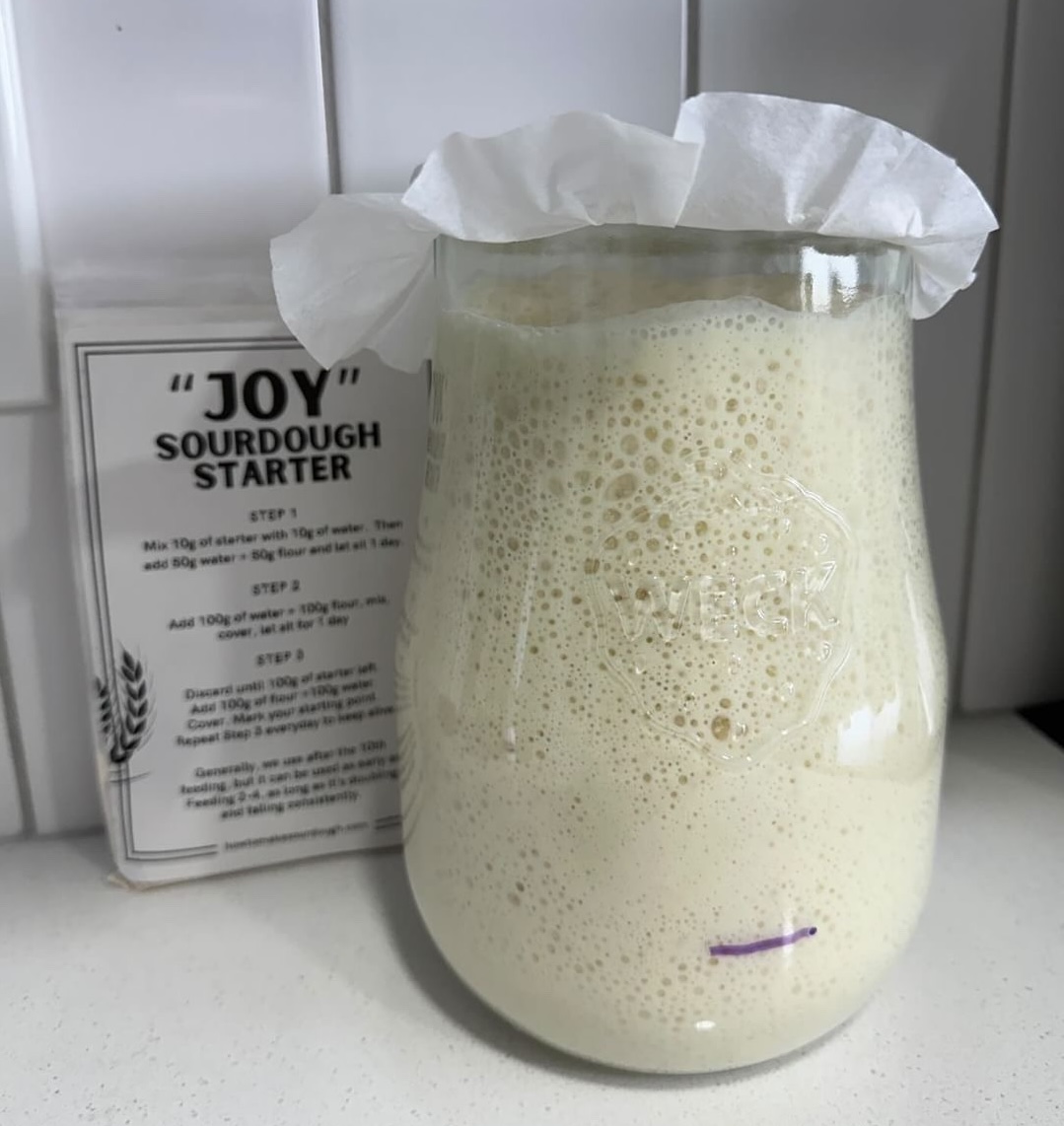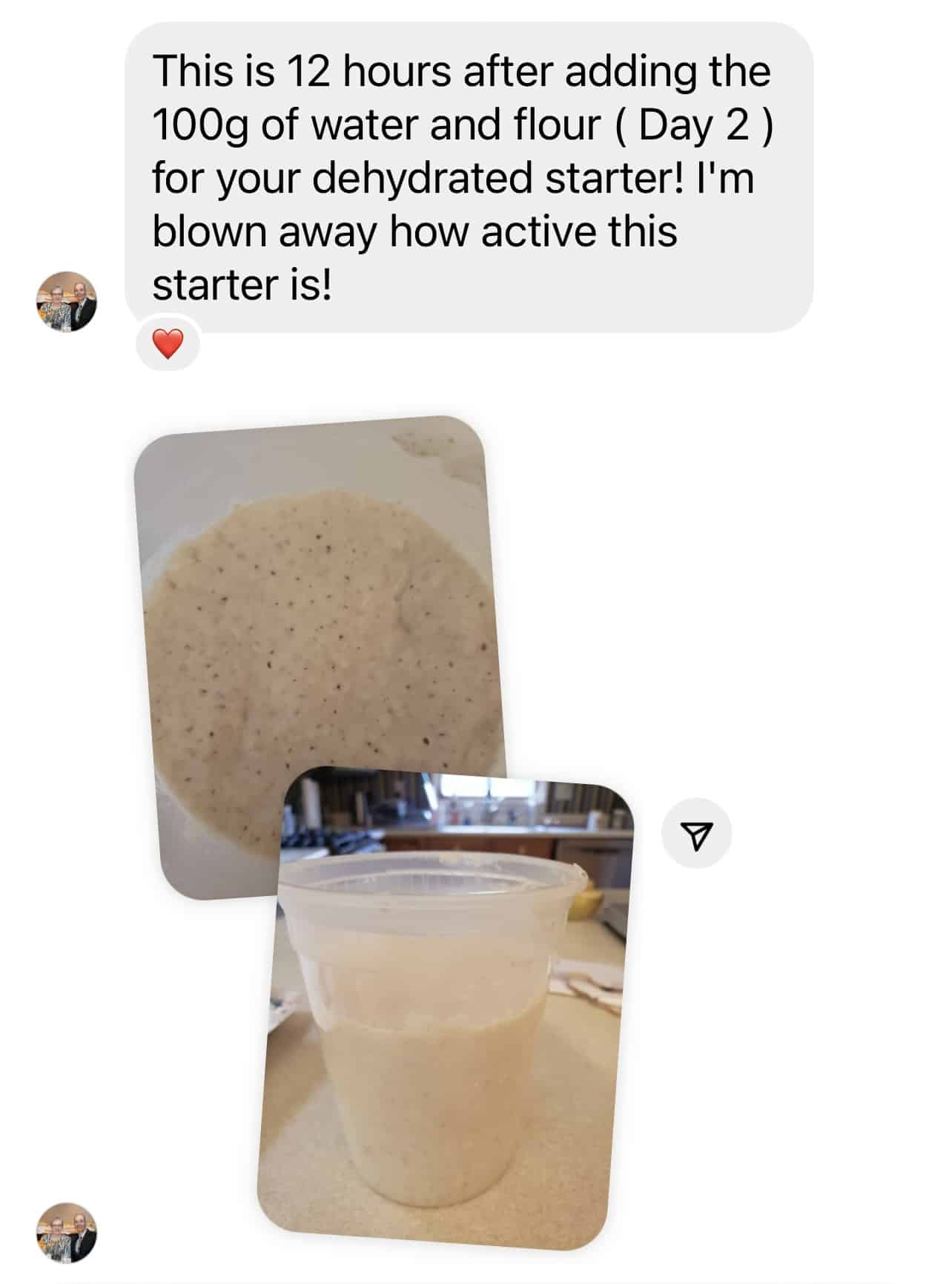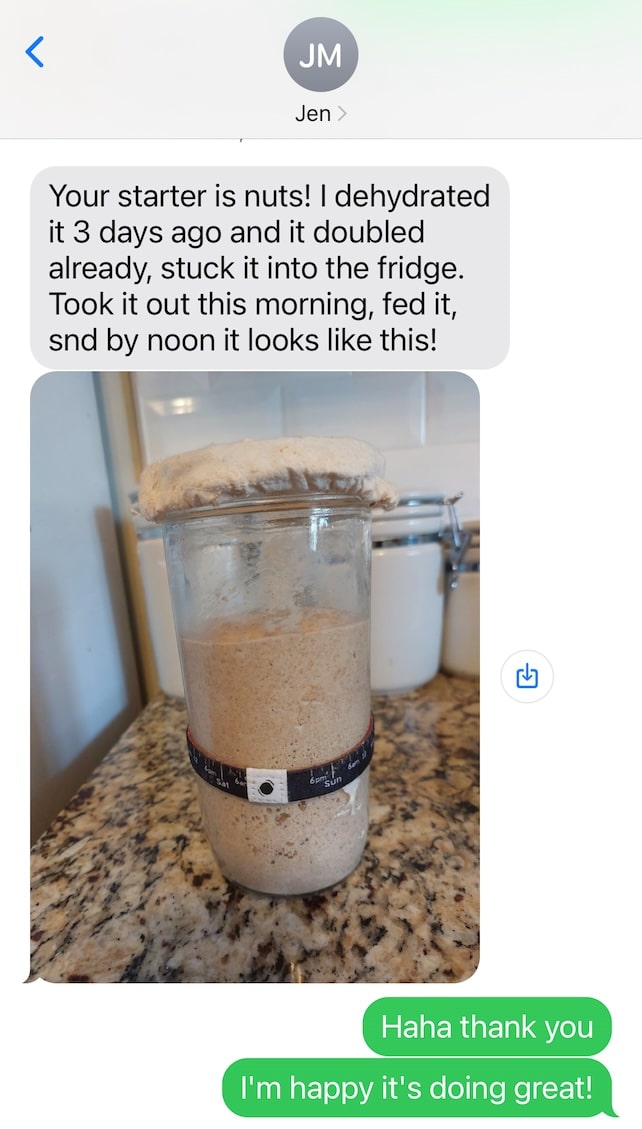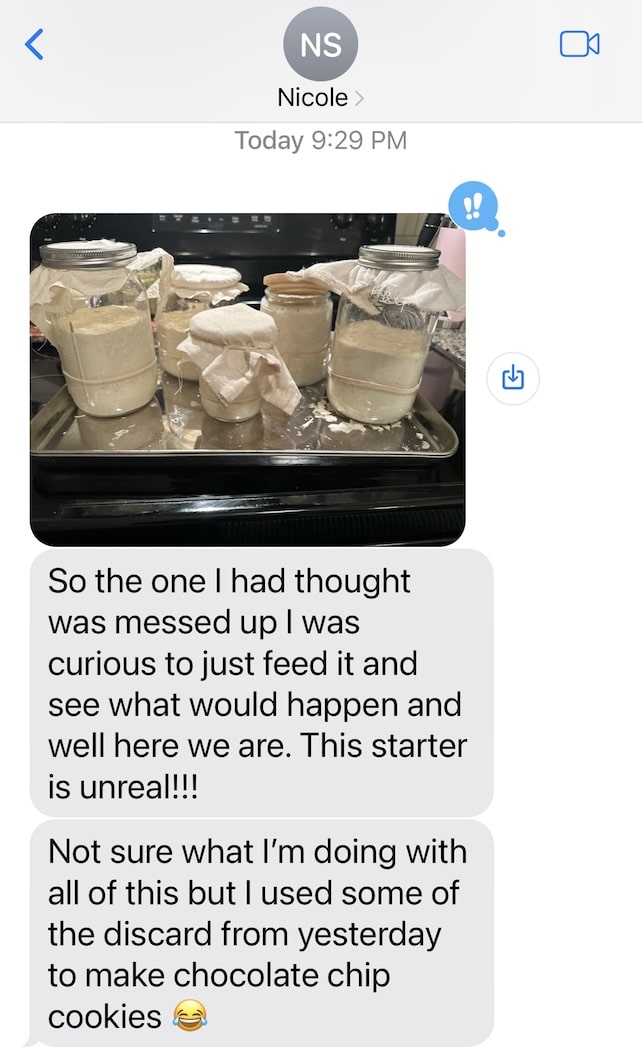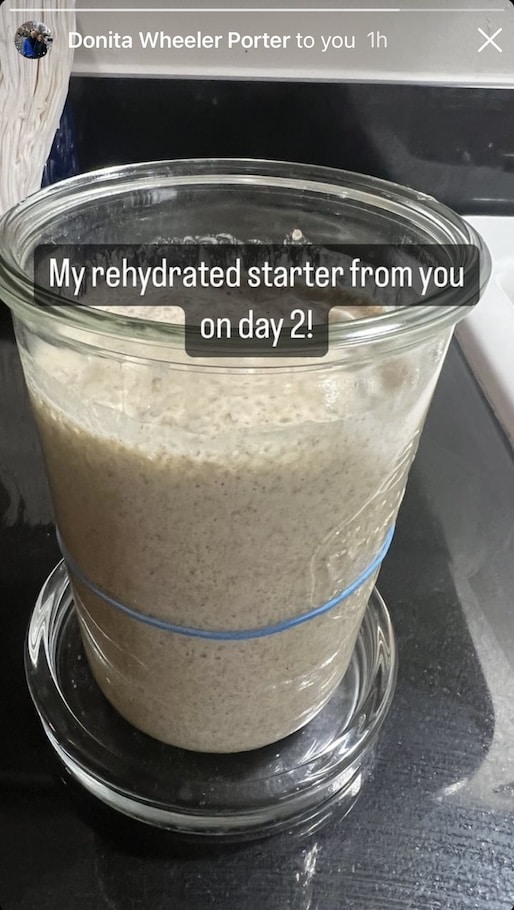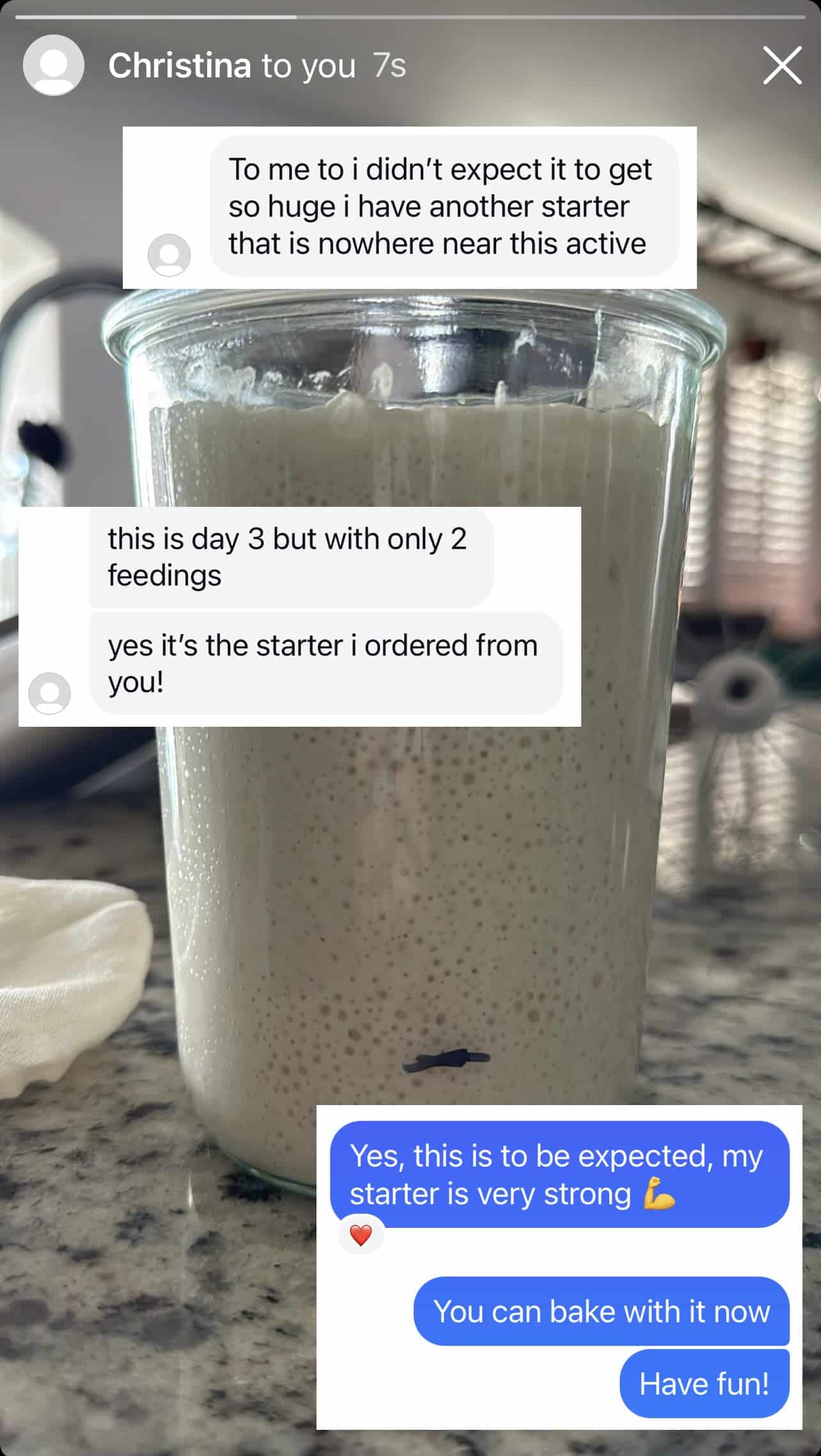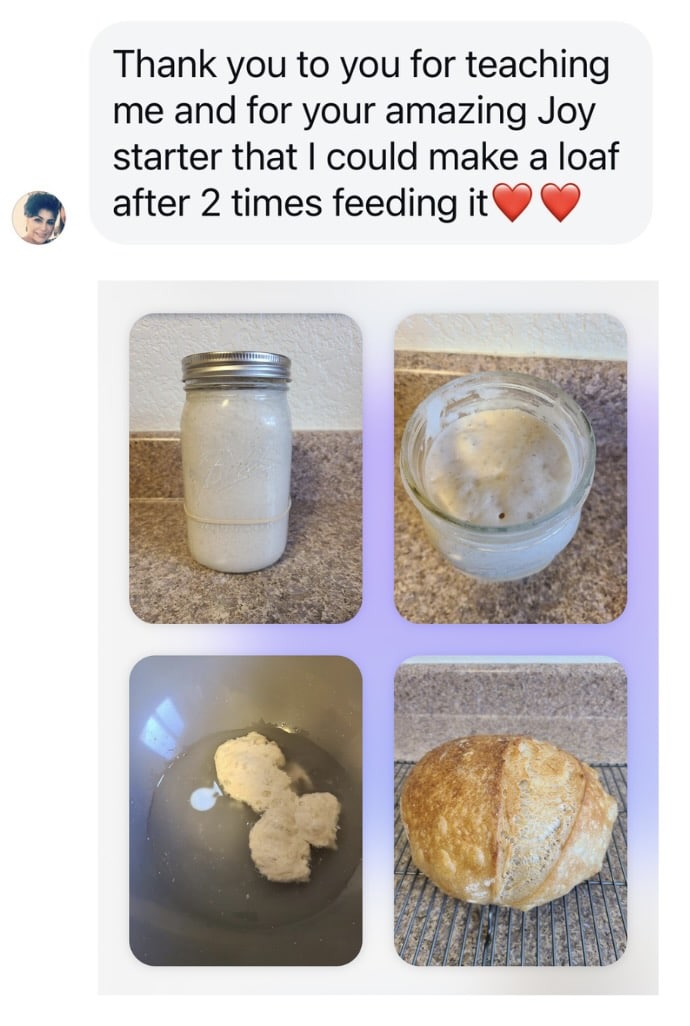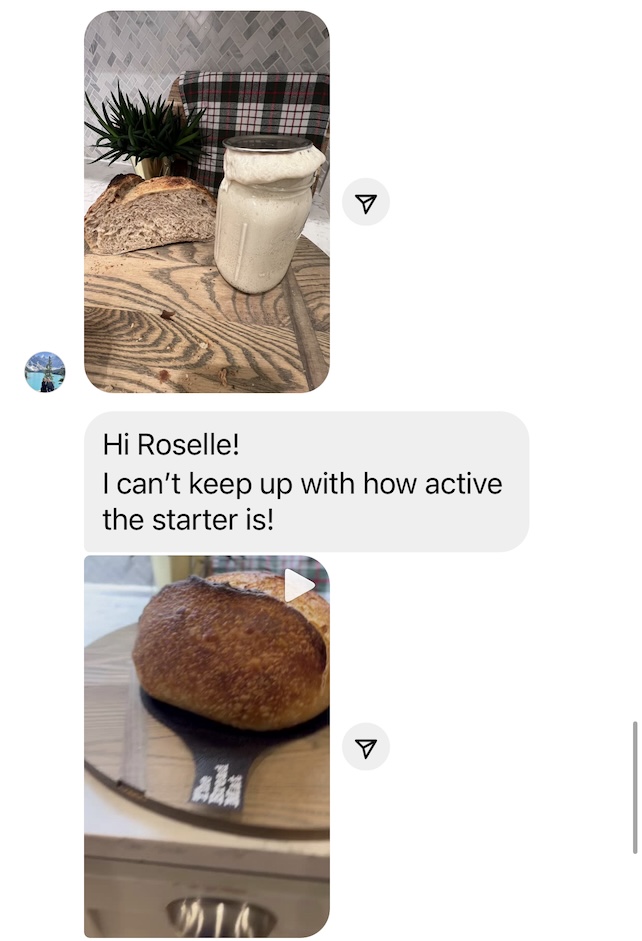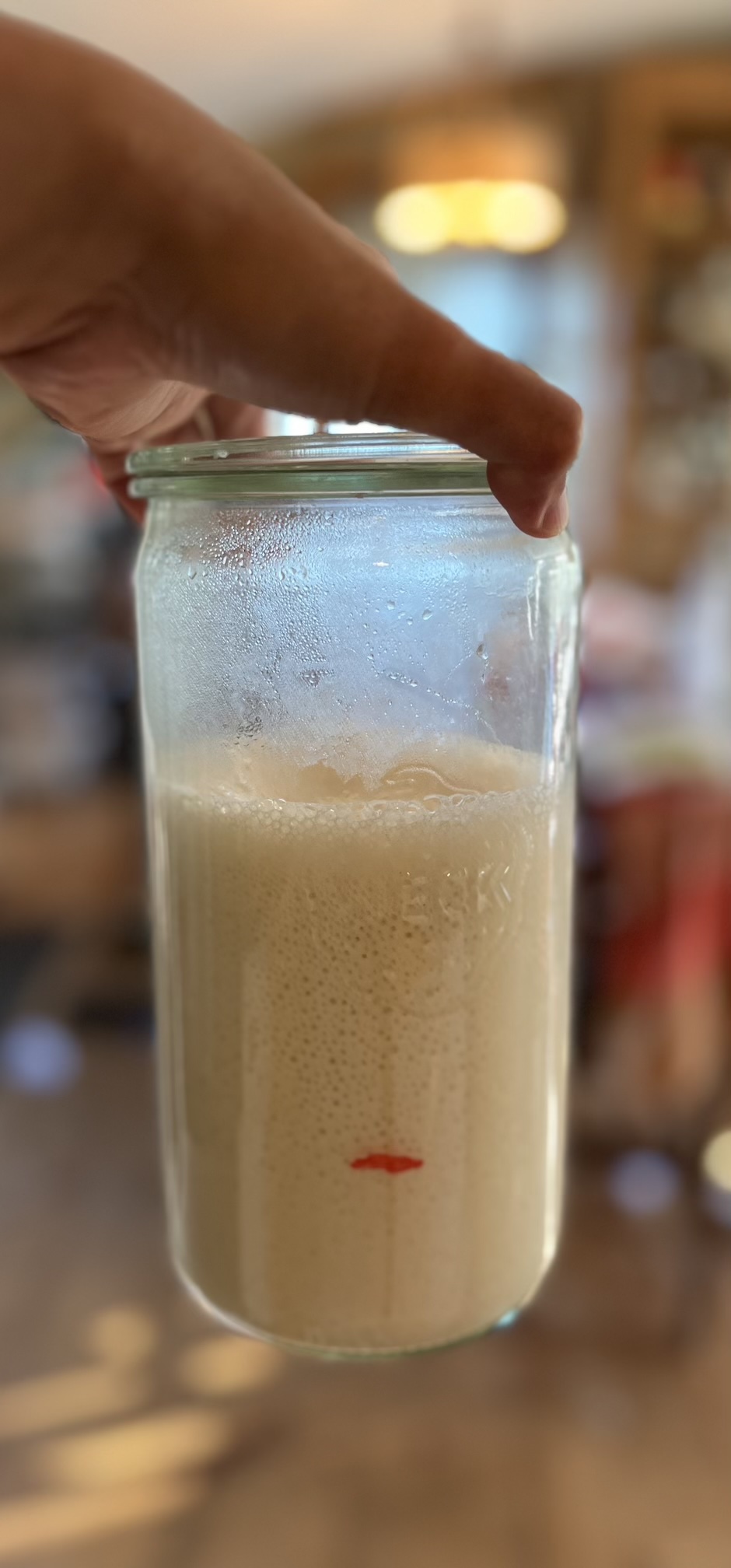How To Use Your Sourdough Starter In Sourdough Recipes
There are 2 ways you can use your sourdough starter in sourdough recipes: the Levain Method and the No-Discard Method.
Let’s explore the pros and cons of each approach to help you determine which one might work best for your sourdough baking needs.
The Levain Method
The Levain Method involves creating a separate starter culture that you’ll use specifically for your recipe. This involves taking a portion of your main sourdough starter and feeding it to create the levain.
For example:
Let’s say your regular sourdough starter is made with all-purpose or bread flour, but you want to make a 100% whole wheat sourdough bread. In this case, the Levain Method allows you to take a portion of your main starter and feed it into a 100% whole wheat levain specifically for that recipe. Here’s how that would work:
Suppose your recipe requires 100g of sourdough starter. Instead of using your regular starter directly, you would take 25g of that starter and feed it with 50g of whole wheat flour and 50g of water. This creates a 125g whole wheat levain that you can then use in your 100% whole wheat sourdough bread recipe.
The advantage here is that you get to maintain your original starter, while also customizing a levain that perfectly matches the needs of the specific recipe. This allows you to bake a truly 100% whole wheat sourdough bread, even if your regular starter isn’t formulated that way.
The Levain Method gives you this flexibility to create starter cultures tailored to the recipe at hand. Whether it’s a whole wheat, rye, or any other specialty flour blend, the levain can be dialed in to ensure your final bread has the desired characteristics.
This level of control and customization is a key benefit of the Levain Method, as it allows you to optimize the leavening agent for each unique sourdough recipe. It’s a versatile technique that expands the possibilities when baking with your sourdough starter.
The No-Discard Method
The No-Discard Method involves using your main sourdough starter directly in the recipe, without creating a separate levain.
When deciding between the Levain Method and the No-Discard Method, consider factors such as your baking frequency, the complexity of your recipes, and your personal preferences. The Levain Method offers more flexibility and control, while the No-Discard Method is simpler and generates less waste.
Ultimately, the best approach will depend on your individual needs and experience level as a sourdough baker. Experiment with both methods and find the one that works best for you and your baking style.
Step By Step Instructions
Let’s dive deeper into the step-by-step process for both the Levain Method and the No-Discard Method when incorporating your sourdough starter into bread recipes.
The key differences between the two methods are the extra step of creating a separate levain in the first approach, versus directly using your main starter in the second method.
Both are valid techniques, and the choice will depend on your personal preferences, recipe requirements, and the size of your main sourdough starter.


